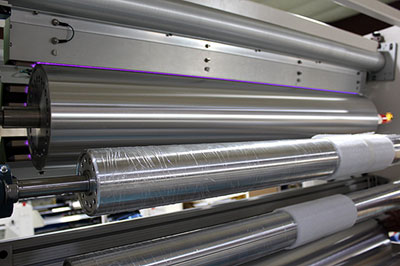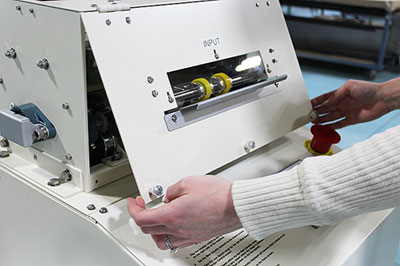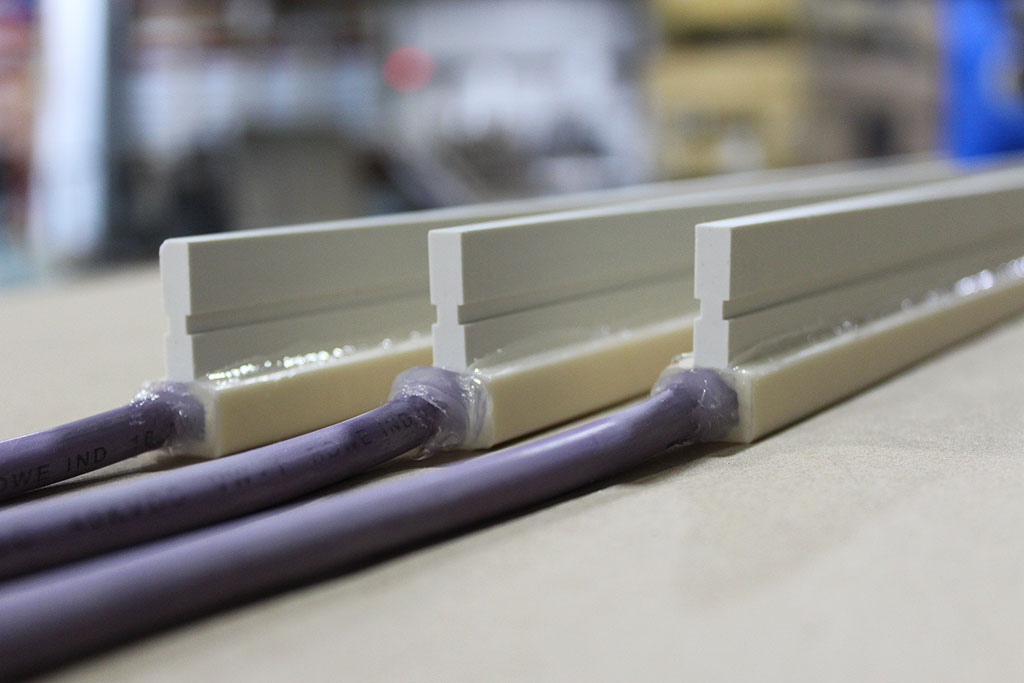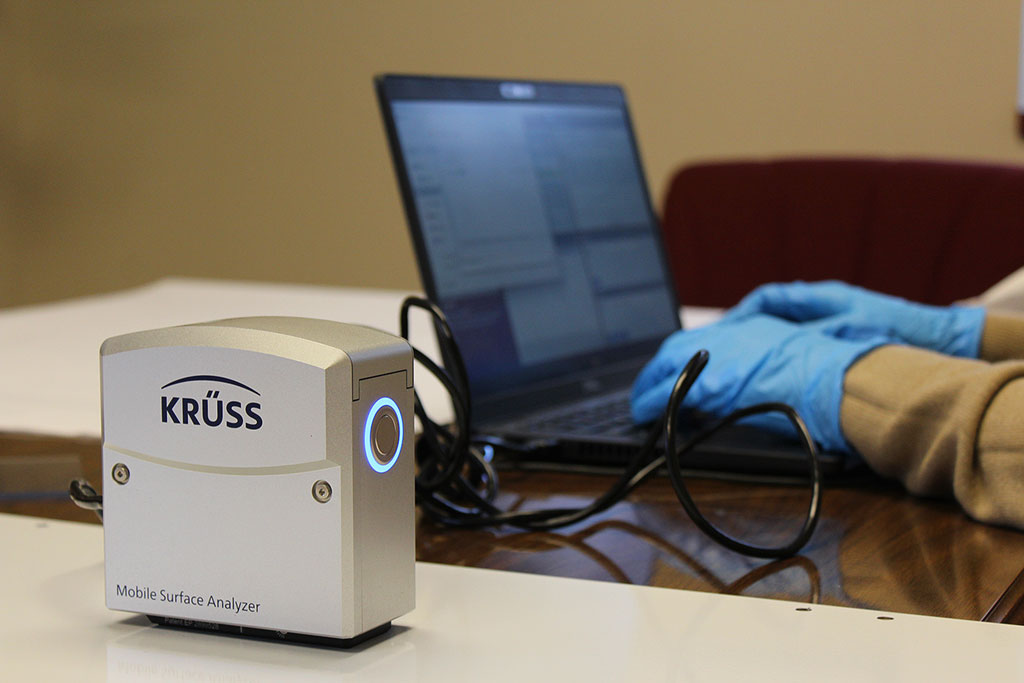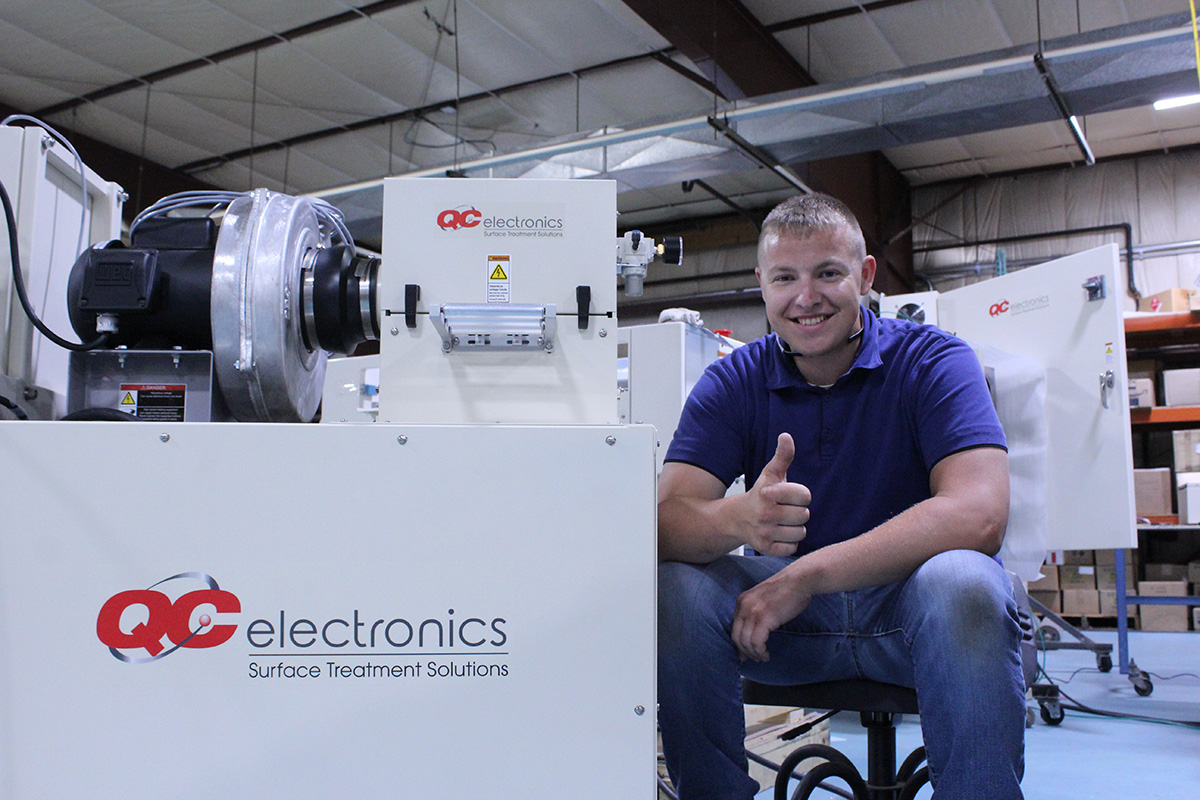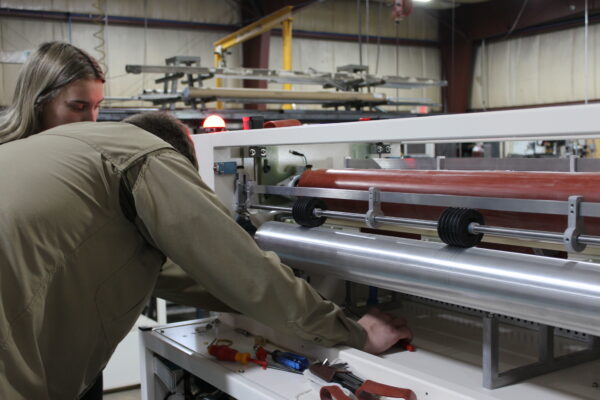Overtreatment can be costly to your company and product. It is easily avoided following the proper formulation for power requirements per your adhesion process and material characteristics. When the material is treated at higher power levels than necessary, we can expect overtreatment.
The material’s structure will only allow a certain increase in surface energy depending on the material. Overtreatment can also be referred to as treating to an incompatible surface energy of the adhesive – treating too high will cause failure. As a general rule, treat the substrate so that it is 8-10 dynes (surface energy) above the surface energy of the adhesive at the point of application. If you treat too high or too low, the test will fail. We are always happy to test your material if you’d like to get a precise starting point.
Sometimes overtreatment is referred to as etching or roughening the surface of the substrate. Plasma attacks various areas of the substrate, referred to as plasma etches, damaging the surface. Frequency plays a role in plasma etching.
A study was done that proved power density of the corona field maxes out at 10 khz. Many corona treaters roughen the surface because they are running at much higher frequencies than QC. Most corona treaters run at variable frequencies typically from 20 khz to 50 khz (sometimes higher). The frequency of the unit plays a vital role in performance. High frequency causes etching, heat stress, and overall reliability issues. High frequency is also known to pinhole thin gauge webs. As you increase frequency, you increase etching, or roughening of the surface. This is not necessary in the corona process because it is not a mechanical bond. The corona process raises the surface energy of the material to a compatible level with the adhesive; if done correctly it does not roughen or damage the surface of the material. Unfortunately, this is not widely known.
It’s much less likely to ‘overtreat’ on QC corona treaters. QC corona treaters do not roughen the surface as we run at a fixed frequency.
Sometimes treater manufacturers argue it’s a better bond because you have a mechanical backup, but this is false. Etching causes voids where the substrate is etched, and in result more coating is needed to accommodate those voids.
Etched areas are not at the same surface energy as the area of the substrate that was not etched, resulting in uneven treatment and unpredictable adhesion.
For more information on effective corona treatment, contact sales@qcelectronics.com.
